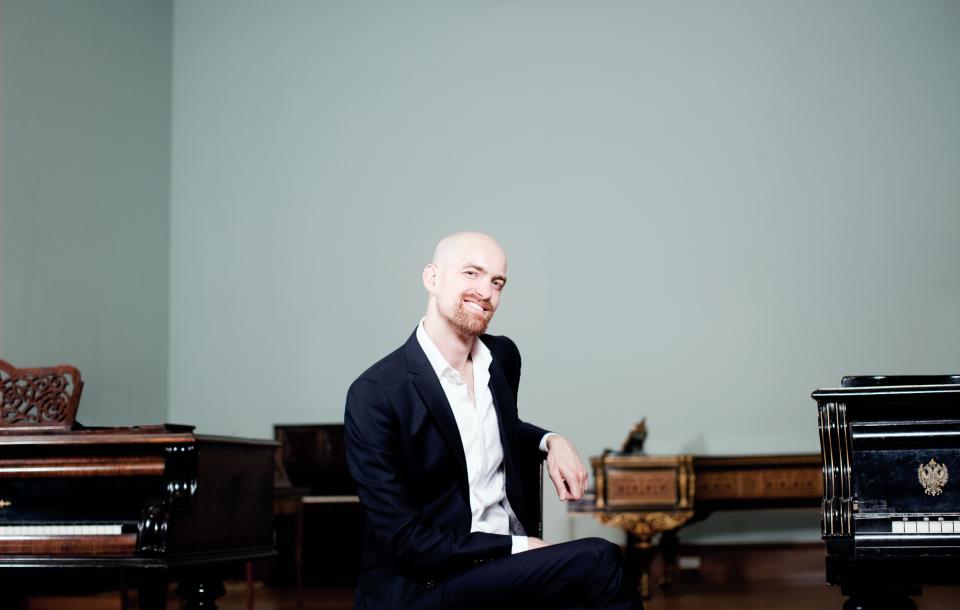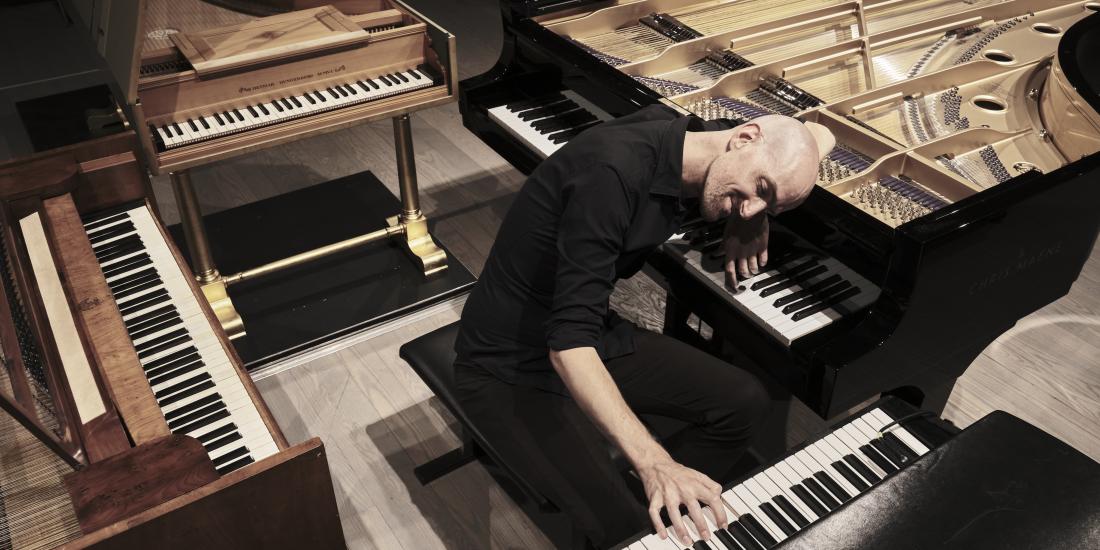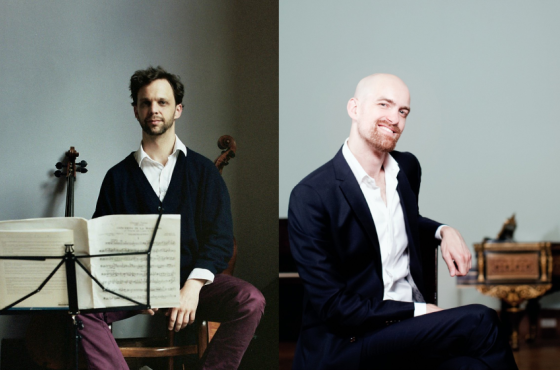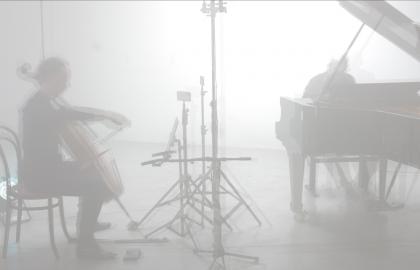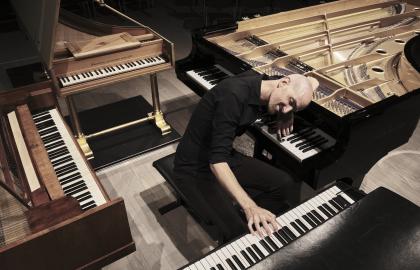You are often labelled “the eclectic artist.” Where does such openness come from?
I think it is the result of my cultural background. I am Australian, with very strong European roots – my father was born in Romania. Australian culture is relatively new and is based on immigration and assimilation processes, which make it very fluid. It’s part of my makeup: no real borders and a distancing from tradition. In the United States, where I lived later on, I encountered a similar phenomenon. I then settled in Europe where things are incredibly organised and where everybody is encouraged to specialise. But I am more of a generalist!
Yet you have played with very specialised early music ensembles?
I had to learn to specialise during my studies and early in my career. I first had to arrive at a deep understanding of certain genres to then subsequently integrate them into my personal mix. It is only recently that I have really embraced all the possibilities that were available to me.
Is this unconventional spirit part of your DNA?
I think it is less the result of my personality and more a question of my artistic vision. I lead a very disciplined life: I eat well, I don’t drink, smoke or take drugs... I am rather strict. But I consider music as a playground where I am allowed to experiment freely and in complete safety.
This freedom seems perfectly natural. In fact, there is nothing surprising about listening to Mozart at breakfast, James Blake at lunch and Nick Drake in the evening…
I agree. I think that today more than ever we are used to having a wide listening choice. I find this fragmented approach to our way of listening to and consuming music is interesting. That’s why I am happy to bring together different aesthetic worlds on stage and approach them with musicians who are equally eclectic.
Tell me about your colleagues.
We are all very comfortable playing early music. Liam, Anna and myself play period instruments, but the three of us come from a much broader musical background. Liam is very knowledgeable about contemporary music, which interests me a lot! Anna often plays traditional music. Personally, I see nothing wrong in combining all these kinds of music. We approach baroque with the knowledge of this music, and we do the same with contemporary music.
Explain.
The historically informed performance movement should not be limited to early music. This philosophy inspires us to explore the context of a work, to look objectively at scores and sources and be able to either accept or reject certain practices. I can choose to play a piece written for the harpsichord on the piano or another instrument, in full knowledge of the facts.
What instruments will you be playing at Bozar?
I will be playing a modern piano and a harpsichord. I will also be pleased to bring my Prophet Rev2, a marvellous polyphonic synthesizer.
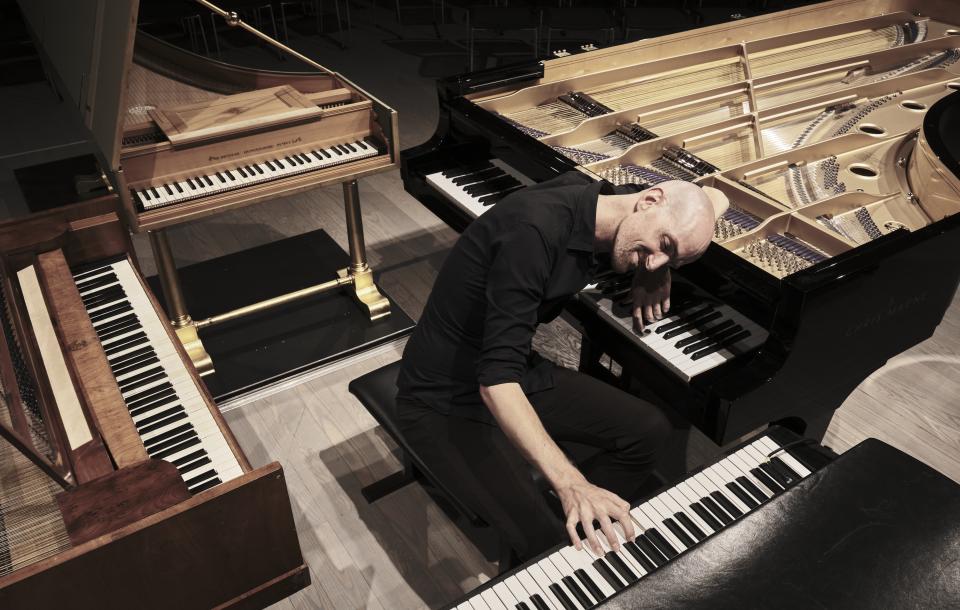
Tell us about your programme.
I see it as an art gallery of which I am the curator. I select a series of paintings from different periods and bring them together in an interesting way. I can also include my own pieces, define the lighting, and, as a result, tell a story. All these individual works are therefore brought together within a single creative act that is “cobbled together” if you like.
What is its structure?
The programme is divided into three parts. We start with a brief moment of baroque music that serves to make us feel at ease on stage. Then Anna plays some traditional Irish music and we improvise. After that I sit down at the piano for the modern part that includes Crumb, Adams, Messiaen – and Beethoven. Then, when I move to the synthesizer, things mix together and become more jumbled, which I like. Finally, we return to early music, but with rearranged pieces, such as Die Kunst der Fuge by Bach to which we add original polyphonic voices.
How do you obtain unity within such a broad programme?
We improvise between the pieces so as to link them. This is where the concert’s title Bridges comes from: bridges that we create between the works and the genres. These moments enable us to avoid silences, as applause between pieces removes some of the magic.
How do you improvise?
It is not improvisation pure and simple. It is more a matter of giving yourself freedom to choose. I encourage us to take risks. Most of the improvisations are with Liam, and with Anna too. Elfa is new to this project, so I don’t want to ask too much of him. The two of us will play a Beethoven sonata. I am curious to see where our freedom will lie in this interpretation!
What do you think of the way classical music is taught?
This music is taught in conservatories. It is interesting to note how the aim of the institution is to conserve. I think we have moved beyond this stage. The body of work exists and is preserved. Very good! The time has come for musicians to say: "let’s be less religious in our relationship to music".
Are you an optimist?
I would define myself more as a realist. I find it important to observe what really exists and to base my actions on it without harbouring utopian ideas. At the societal level, that means trying to reduce one’s footprint on the planet to a minimum and to focus on what’s essential. Perhaps it is preferable for our future not to cling desperately to the past but rather to find balance between tradition and innovation, by defining what we should keep and what we should let go of.
Translated by ISO Translation
